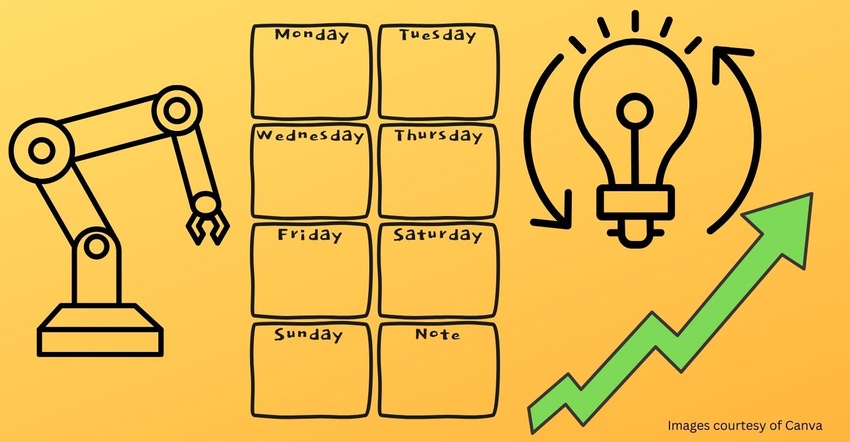Innovation is more than a burst of inspiration. It's a disciplined process that can deliver results in myriad ways.

Innovation can bolster a company’s profits, re-energize a customer base, and streamline an organization’s operation. While there’s a common belief that innovation happens in a burst of inspiration, innovation requires a disciplined process to truly take shape.
Our ideation process philosophy is “innovate first, interact second.” When tackling a new project, we seek out ways to innovate across four different paths:
1. Innovation by automation.
Small details impact cost and labor. Innovation by automation may include a new way of printing on cases or a more efficient way to stack pallets. We walk through processes with people, looking at different pieces and options. Large equipment engineers can inform line layouts. Third-party companies help with automation for downstream case packers and palletizers. Innovation by automation is best for larger stock-keeping units; it’s less cost-effective for small SKUs.
2. Innovation by scheduling.
The book Atomic Habits discusses “habit stacking” — a process for completing tasks faster and more efficiently. Innovation by scheduling is similar. Running SKUs back-to-back, for example, could be a smart way to save money and be more operationally efficient.
3. Innovation by idea sharing.
Idea sharing with a trusted partner is an overlooked asset.
While large food brands have a lot of experience, they still look to innovation as a competitive advantage and can benefit from an ideation process. Upstart brands may have less experience with new product launches, packaging operations, and quality standards and can benefit from a packaging partner’s wisdom. For example, we helped one client assess a powder versus a liquid format for their product.
4. Innovation by continuous improvement.
Continuous improvement always begins with a question: What can we do differently to streamline production? Then move on to follow-up questions: What if we used format X? What if we chose an alternative packaging solution? What if we changed the volume? What is the price point of comparable products? The goal is to reinvent processes to shave off cents per package. An existing brand might, for example, reformat a product’s packaging to impact operational results, yield, waste, and scrap.
Consumer packaged goods (CPG) companies deal with everything from changing consumer preferences to thin margins to supply chain issues to economic swings. Understanding — and implementing — an ideation process across these four types of innovation can help CPGs continue to thrive.
About the Author(s)
You May Also Like




